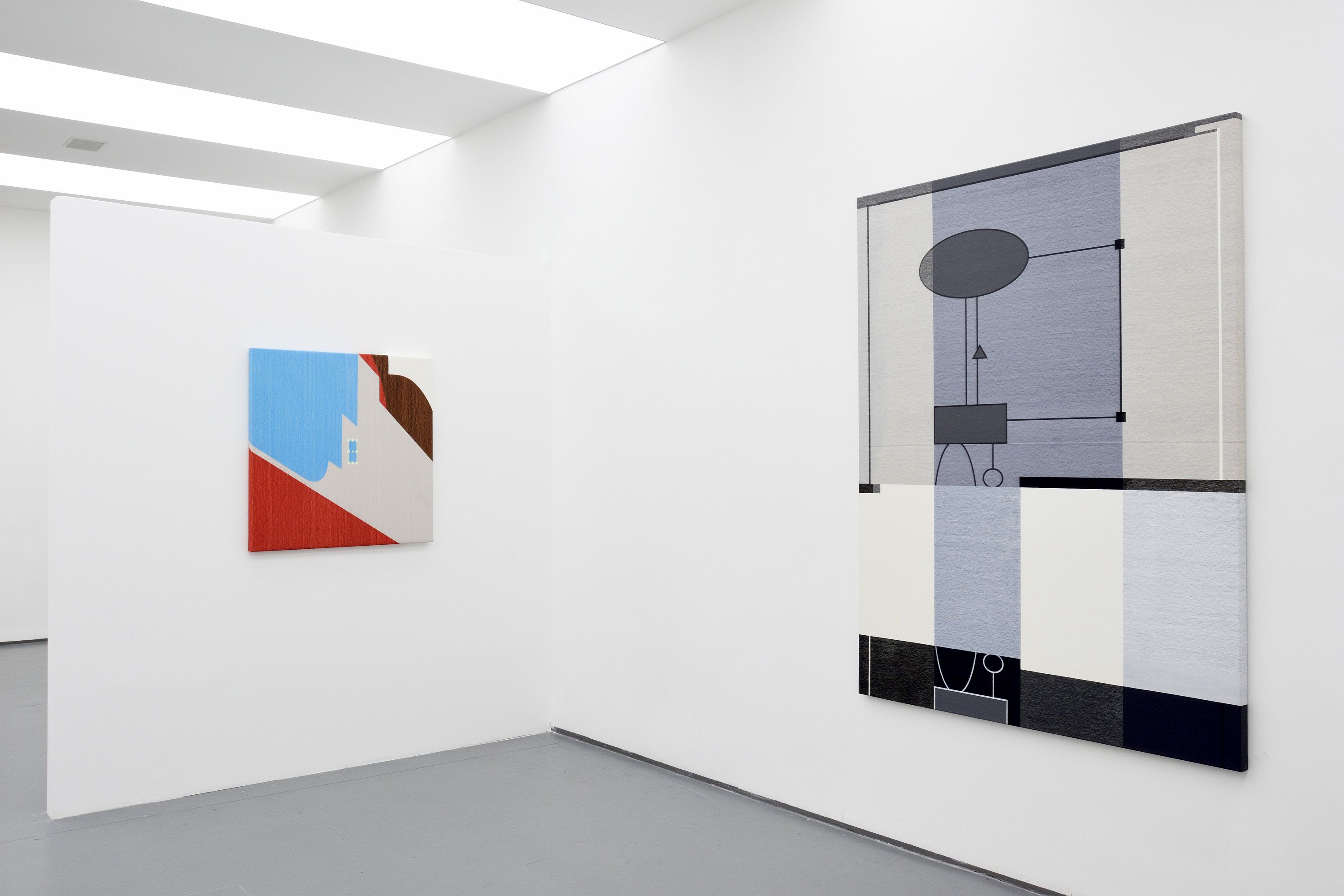Róbert Batykó
Red Eye
| Venue: | acb Gallery |
| Date: | Feb 15 – Mar 29, 2019 |
Description
At Róbert Batykó’s (1981) solo exhibition, acb Gallery presents a selection of the painter’s latest works. The enigmatic spaces and mysterious compositions that have emerged in Batykó’s most recent paintings mark a new stage in his remarkably consistent oeuvre. Throughout the past years the artist’s orientation has clearly been shifting towards the poetic aspects underlying the errors of digital coding and the painterly potentials of the by-products of digital image processing. However, in his new series, Batykó also reflects on fundamental questions regarding post-digital painting: he is interested not only in exploring our relation to digital images, but also in visually rendering in his painting process the overflow of images so typical of our age.
Batykó continues the visual decontextualisation characterising him since the onset of his career by creating a new signature technique. In this spirit, his newest works are dominated by the mechanical gesture of scraping or smearing paint across the canvas, which, despite its impersonality, renders his paintings at once personal and concrete as a kind of unrepeatable and irreproducible act. Batykó transposes digital images in painting; with their themes and lack of facture, they evoke radically extracted details of software interfaces. Batykó’s new paintings also deal with the register of the technological subconscious, while the reality- and vision-manipulating effect of image editing software provides them with a solid frame of reference. The artist constantly re-formulated figurativeness is manifested this time in organizing basic graphic forms into vague figures. The title of the exhibition refers the way our eyes become red and dry from gazing at screens on the one hand, and to the red-eyed man-machine figures known from classical science fiction on the other hand.
In defining his themes, Róbert Batykó uses figures from step-by-step illustrations showing how to make vector images, taken as “found objects” from guides to vector drawing. Taken out of context, these illustrative stages of schematically constructed drawing processes, these figures become anthropomorphic in Batykó’s paintings as a cyclops, a mask or outlines of figures. The artist flashes the haunting subconscious of the manipulation and technological transformability of images in unfamiliar yet familiar, abstract yet figurative form. Moreover, Batykó analyses our vision, as he seeks the autonomous identity of such “frames” in the digital flow of images that are still not quite distinct, but already have the potential of expressivity. Yet another one of his attempts to get closer to the origin of phenomena, the elementary units of virtual language.
The dynamic, smeared surfaces in his canvases may stand for releasing the momentary pause of still images, as a sort of allegory of the flow of digital imagery. Batykó takes illustrations found on the internet and often edits them in Photoshop before recreating them using vector graphic software, then cuts these out as a large stencil, which he uses to paint his canvases. Following this, he mechanically smears the paint before it dries. By reactivating the flow of images through the various stages of transfer in his creative process, he repositions his painting in the age of digital images by delving into the categories of performativity, temporality and participation beyond the painterly problems of representation and abstraction.
Róbert Batykó graduated in 2005 at the Hungarian University of Fine Arts, Department of Painting, in the class of Károly Klimó. He is currently attending the DLA program of the University of Pécs. He has received numerous recognitions for his work. In 2007 he received the Strabag art award, between 2008 and 2011 he was on Derkovits Scholarship, in 2010 he was nominated for the Aviva Award, and in 2011 he won the Leopold Bloom Art Award. He lived and worked in the Netherlands for several years. Since 2007, besides acb Gallery, his works have been exhibited at every prominent Hungarian institution from the Ludwig Museum through the Hungarian National Gallery to the MODEM in Debrecen. A sneak preview of his current program has already been available in 2018 at the group show Meanwhile in Painting at the Budapest Gallery.

